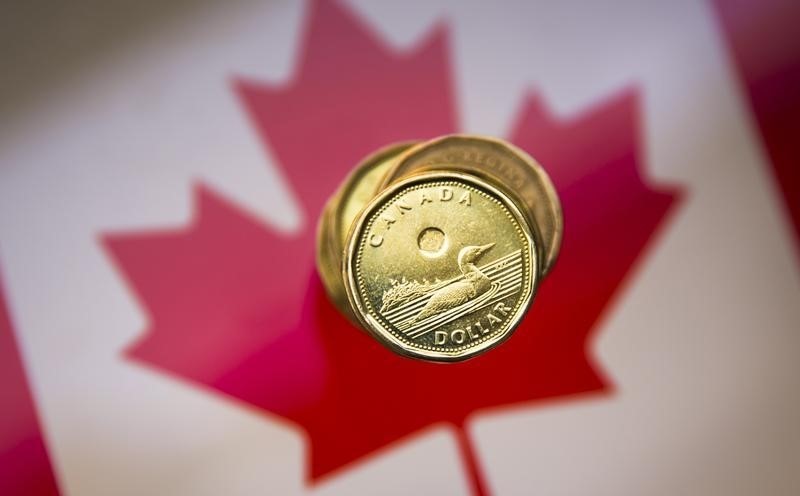(Adds strategist comment, updates prices to close)
* Canadian dollar settles at C$1.3296, or 75.21 U.S cents
* Bond prices mixed across the maturity curve
By Alastair Sharp
TORONTO, Nov 25 (Reuters) - The Canadian dollar made a small
gain against its U.S. counterpart and pushed to a four-month
high against the euro on Wednesday as crude oil recovered from
earlier losses.
The loonie, as Canada's currency is colloquially known, had
weakened earlier as crude traded lower, before reversing course
in line with the commodity, a major Canadian export.
"We have been to a large extent tracking movements in crude
oil," said Matt Perrier, managing director of foreign exchange
sales at BMO Capital Markets.
"It's been a fairly tight range all things considered, and
not overly surprising given we're heading into the U.S.
Thanksgiving holiday tomorrow," he said.
The Canadian dollar CAD=D4 settled at C$1.3296 to the
greenback, or 75.21 U.S cents, slightly stronger than Tuesday's
official close of C$1.3309, or 75.14 U.S. cents.
U.S. crude CLc1 prices settled up 0.4 percent at $43.04 a
barrel, while Brent LCOc1 rose slightly to $46.17 after being
driven higher on Tuesday by heightened geopolitical
tensions.
The Canadian dollar touched C$1.4067 to the euro, its
strongest level against the single currency since mid-July,
after Reuters reported that euro zone central bank officials
were considering a range of options to kickstart the region's
stagnant economy.
Perrier said the loonie could strengthen further but will
likely fade closer to the U.S. Federal Reserve's policy meeting
in December, which many suspect will result in higher U.S.
interest rates.
"My view is largely predicated on a technical basis, and
shorter term, given Monday's rejection of the topside and
yesterday's higher close for the Canadian dollar, I see
prospects for further Canadian dollar strength in the near term
but I think it's going to be somewhat limited," he said.
U.S. durable goods rose more than anticipated in October and
jobless claims fell in the latest week, but that picture of
economic improvement was offset by tepid consumer spending for
October.
Canada's economy is rebounding following a modest
contraction in the first half of the year, boosted by non-energy
exports and investment, which will help growth reach 2.5 percent
in 2017, Bank of Canada Deputy Governor Lynn Patterson said on
Tuesday.
Canadian government bond prices were mixed across the
maturity curve, with the two-year CA2YT=RR price down 1.5
Canadian cents to yield 0.629 percent and the benchmark 10-year
CA10YT=RR up 24 Canadian cents to yield 1.589 percent.
Canada-U.S. spreads narrowed at the short end and widened
further out, with the two-year bond spread at -30.5 basis points
and the 10-year spread at -64.3 basis points.
